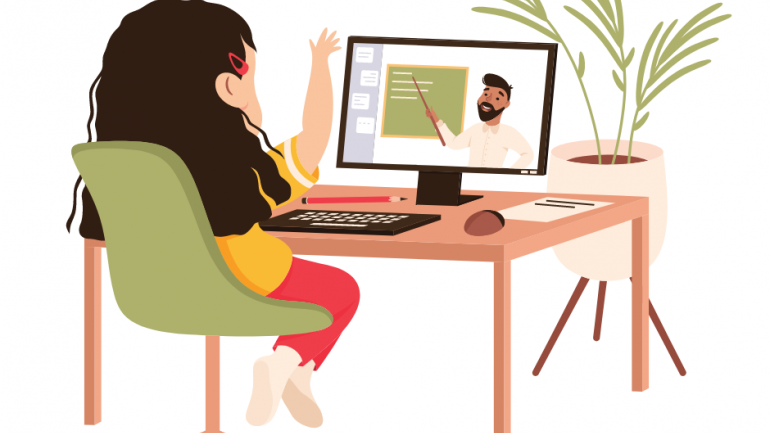
It scarcely bears mentioning that the last sixteen months of virtual school have been challenging, and often quite frustrating, for students, staff and families alike across San Francisco and much of the rest of the world. At the same time, there’s no denying that the situation presented a truly once in a lifetime opportunity to discover new things about how people learn, how people teach, and what alternatives to the conventional school experience might look like. Lessons from the past year will inform debates and policies in the education sector for years to come, and Gateway educators are already hard at work planning to harness some of those lessons for the 2021-2022 school year.
While almost all students struggled to adjust to distance learning, the transition was especially fraught for those with learning differences and students in sixth and ninth grades – those who were just starting out at a new school and didn’t have many pre-existing relationships to fall back on or opportunities to meet new friends.
“We had to put a lot of energy into our ninth graders, especially early on, trying to build relationships with them without getting much interaction in return,” said Marlie McCallum, Director of the GHS Learning Center. “We needed to do a lot of personal outreach via text and phone calls, lots of encouragement in class, lots of doing fun things in breakout rooms to give kids space to build relationships and trust.”
At the same time, some students absolutely thrived in the new virtual context, even preferring it to their conventional on-campus schedule.
“Particularly for students with school or social anxiety, this year was a real respite for them,” said Marlies. “But we want them to be excited to come back too, and make sure we’re meeting their needs. Even if we can’t replicate distance learning exactly, we can work with their teachers to make sure they have some of that flexibility, or access to quiet spaces on campus, or whatever they now know that they need to do their best.”
When polled at GMS, the vast majority of students said they were excited to return to campus next year, but were also somewhat anxious about getting back into the groove of socializing in person.
“It’s really a great opportunity to say ‘what do we want to shift about the way school has always been?’” said Cassandra Dougherty, Director of the GMS Learning Center. “That can include things like building deliberate breaks into class for non-academic time, or structures for interaction between students instead of just relying on them to get back into the flow on their own. In some ways, this year almost requires that we approach planning similar to how you would in elementary school, with a heavy emphasis on community building.”
Another unanticipated upside to distance learning was the way in which it not only meant students and teachers quickly became familiar with a wide variety of new technologies that can be used going forward, but it also de-stigmatized the use of some technologies designed for students with learning differences.
“We saw students with learning differences really take big steps toward learning independently this year, because tools like text-to-speech are just embedded into platforms like Google Read&Write, and so it carries less of a stigma,” said Cassandra. “So next year we want to be really intentional about having teachers model using those features in class, and being positive about seeing kids use it.”
Ultimately, distanced learning simply underscored what many educators have known all along: that academics is only one piece of the puzzle when it comes to figuring out how to meet all learners’ needs at school and prepare them to thrive as adults.
“It would be easy to say, okay let’s just focus on how we accelerate learning, let’s just focus on how we can assess what kids missed this year,” said Cassandra. “But none of that’s possible if we don’t focus on rebuilding relationships and our community first.”